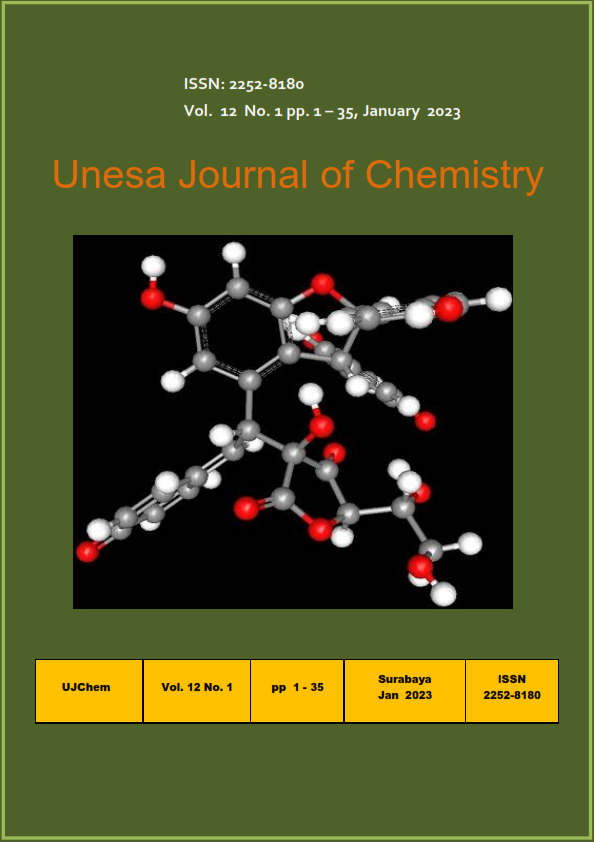POTENCY OF EUGENOL COMPOUNDS FROM CLOVE (Syzygium aromaticum) AS HIV-1 PROTEASE (PR) INHIBITORS
Main Article Content
Abstract
Syzygium aromaticum is a medicinal plant that is well known for its uses in the medical world. This plant contains essential oil that has a lot of bioactivitis, namely eugenol. This study aims to determine the potency of the compound eugenol and its derivatives as an inhibitor of HIV-1 protease (PR), an HIV-1 antiviral candidate. The ligands used in this study were eugenol, methyl eugenol, acetyl eugenol, and isoeugenol. The results showed that the compound acetyl eugenol has the potential to act as an HIV-1 protease inhibitor better than other eugenol derivatives because it has a lower binding affinity value (-6.2 kcal/mol) of the other compounds. Further studies such as in vitro and in vivo tests are needed to prove its activity as an HIV-1 protease.

